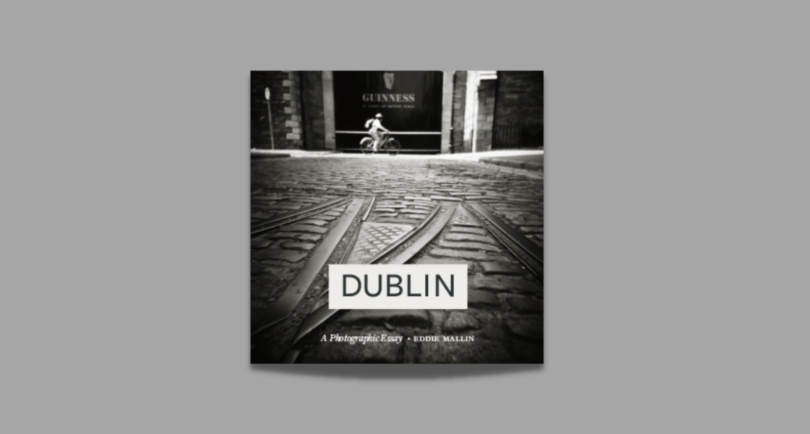by Saverio Mommo
If you’ve ever wondered why photography is able to capture your attention so quickly here’s one of the many possible answers: it stops time and allows a single second to become eternal. We’ve all wanted at least once in our lives to stop time and to live forever in a moment of happiness or affection with our loved ones. In fact, it is no secret that there are some things in the world that we would never want to let go.
This sentiment is perfectly suited to the book “Dublin – A Photography Essay”, moreover it is something you can relate to if you’ve ever been to Dublin, or would simply like to go there. The series of pictures taken by Eddie Mallin are really something else, in fact they’re not just pictures of Dublin since they capture the emotions the photographer felt in the exact moment when he shot them.
What I always tend to do when I get a photography book in my hands is open a page in the middle and see if it light’s a spark in me, and if it does, I know that the book that I’m holding is worth it. The reason why I do this is very simple, when you’re exactly at the halfway point on a journey you already have an idea of where you’re going, and you can get an idea of what the journey will bring, who you will be by the end: it’s the most dangerous moment in life as it’s one wherein you can easily fall into mediocrity.
When I first opened this book the way I just described, a photo, although in black and white, began to take colour for me:

Looking at this picture, and some of the others, I found out leafing through the whole book that it is obvious that the Dublin you’re looking at it is not the one that you can find on the internet, it is the unique Dublin of the photographer. That is the most valuable lesson you can take from this book: there’s not just one version of the city you’re living in or just one version of the emotion you’re experiencing, there are multiples. Every element in nature can be immortalized for eternity by photography but the process of choosing the angles and the lens through which looking at them is based on different backgrounds, that’s why no photo will ever be like another.
In his book The Gay Science, Friedrich Nietzsche declares:
“We, however, want to become those we are – human beings who are new, unique, incomparable, who give themselves laws, who create themselves.”
In Galimberti’s words it means that we, as humans, are born and immediately start copying others so that we can grow. However, it comes a time in which we need to emancipate ourselves and create a clear and unique image of who we are and who we want to be.
Photography can be a powerful instrument to do just that and if you’ve got any doubt about it you’d better have a look at Mallin’s book: Dublin, which is part of the story of so many people out there, how a place or a moment in time can shape a person. This city through this lens is the city of the author.
These touching photographs convey the journey that the author has taken to become his true self.
Dublin: A Photographic Essay is available to purchase here.

